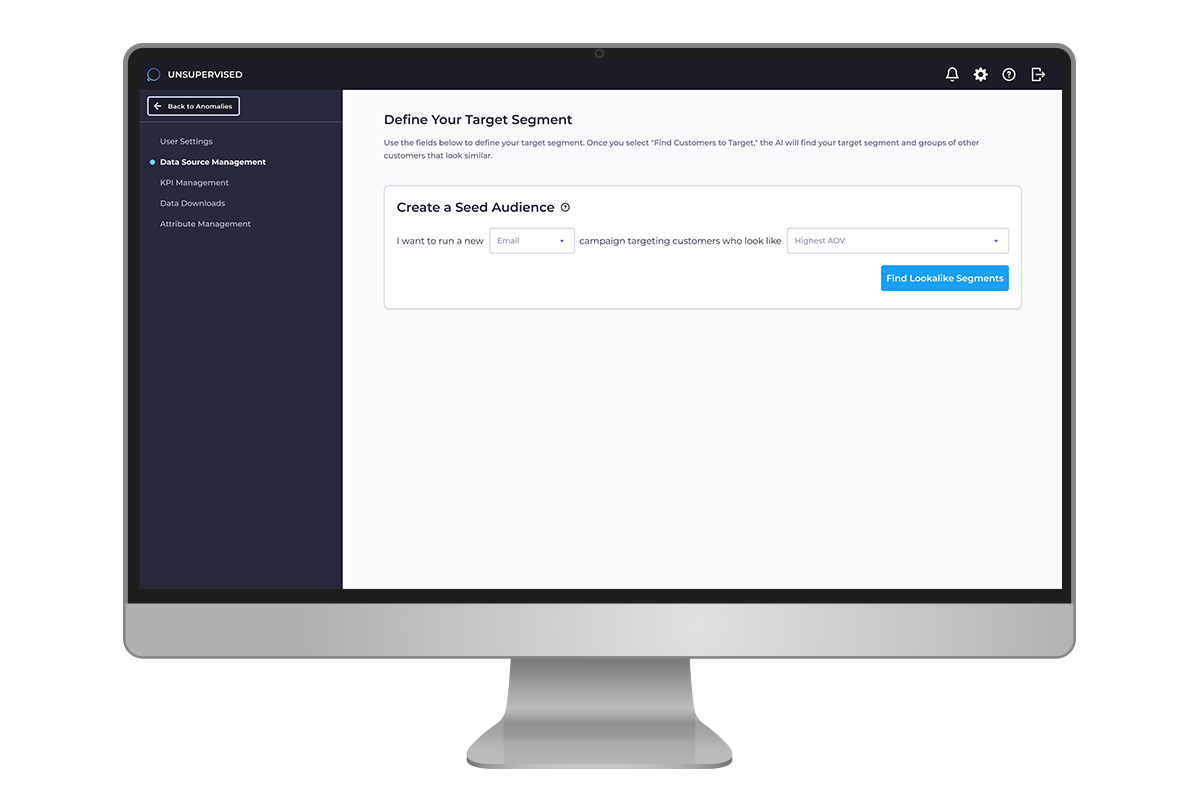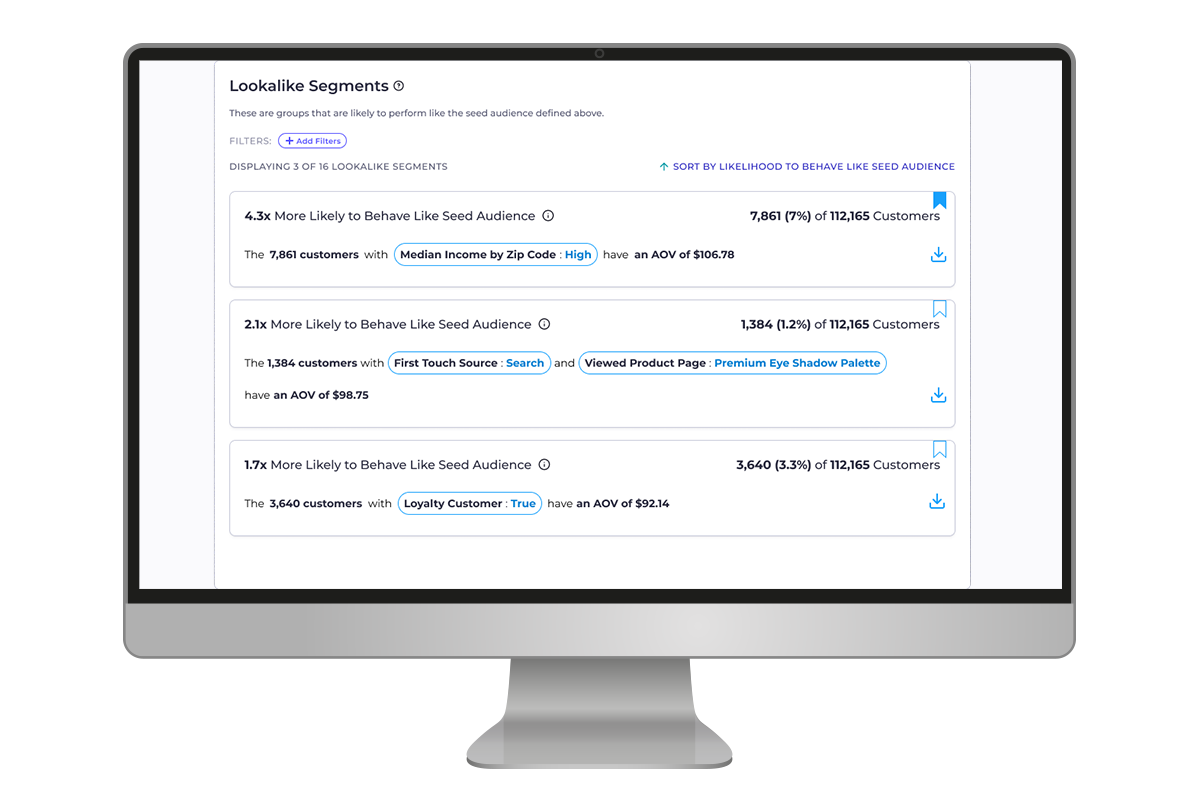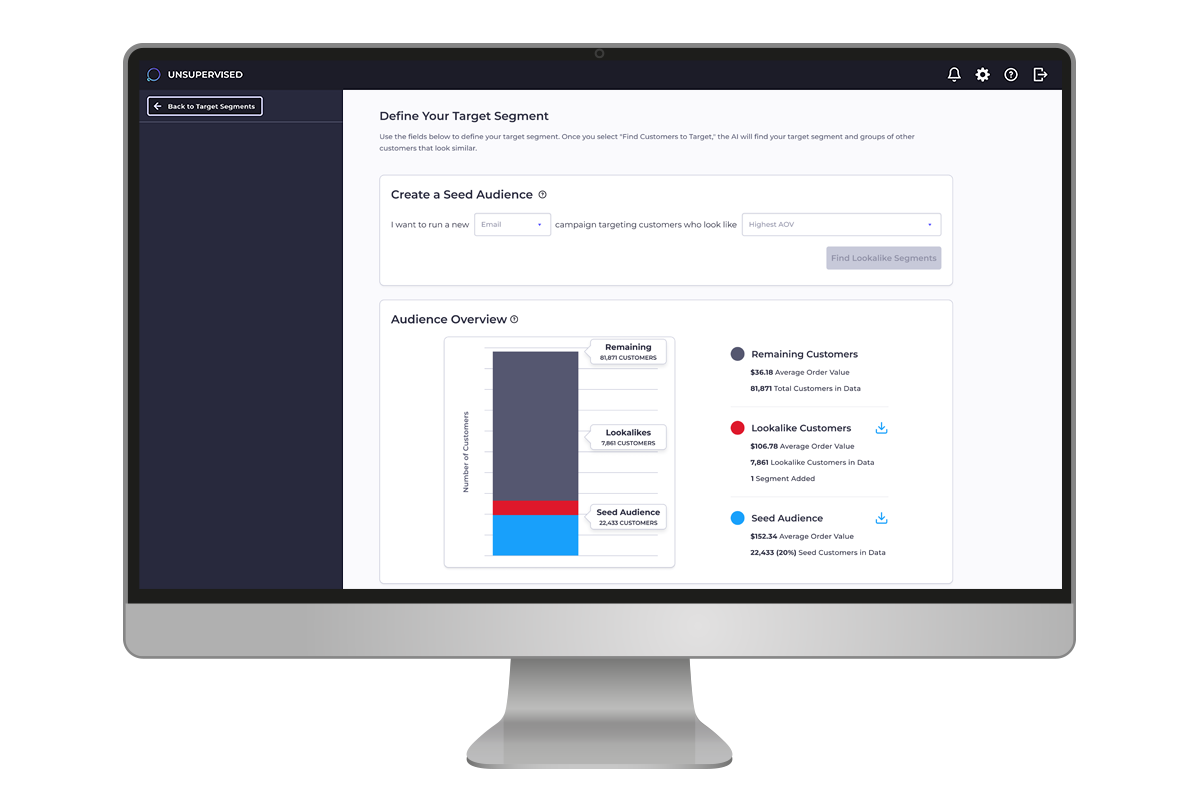The moment the cookies started to crumble, the eCommerce market scrambled.
Once iOS 14 was released, the era of relatively cheap, easy targeting for acquisition was over. Marketers were pressed to drive more value from already acquired customers. After all, acquiring a new customer can cost five times more than retaining an existing customer, and increasing customer retention by just 5% can increase profits from 25-95%.
Campaigns to existing leads and customers would become increasingly important for driving customer activation and retention. But resources are tight, and the same issues appear over and over again. Finding the right segments within first-party data to include in campaigns takes too long, requires too many assumptions, and there are never enough resources.
At Unsupervised, we looked at our AI and thought, “Couldn’t we apply our tech and experience to solving this problem?” After already having unearthed more than $250 million in data-backed insights for customers, it seemed more than doable.
And that thought led to our release of Unsupervised for Retention today. This new product within our platform gives eCommerce marketers an edge by using First Party Lookalikes: expanded customer segment lists most likely to overperform against LTV metrics.
Imagine it’s the end of the quarter and the pressure is on to increase profits fast. Leveraging your existing customer base, you start building an email campaign to promote a special offer. You know you want to target customers that are most likely to achieve the highest AOV, but you have limited time to spend in your CRM testing and hypothesizing. With a tight deadline, you typically end up jumping ahead and delivering mass messaging that doesn’t land the way you would have hoped.
This is where Unsupervised for Retention changes everything. Unsupervised fast tracks customer segmentation, delivering lists of customers based on the KPI you care about, so exporting to your email and SMS tools is a snap. Here’s how it works in 3 easy steps:
Step 1: Find your ideal target segments by using the desired KPI
Unsupervised starts by ingesting and working across your data sources. To specify target segments for your list, select the action you’d like to take and the behavior you’re targeting.
In this case, you’re running an email campaign that targets customers who have a high AOV. From here, simply click “Find Customers to Target” and Unsupervised does the rest: automatically finding customer segments based on who overperforms on your most important KPIs across one or multiple data sources.

Step 2: Flag your First Party Lookalikes
Along with your targeted customer list, Unsupervised will provide First Party Lookalikes, identifying the customer segments that share the behaviors and traits of your best customers so you can reach them with the perfect offer. Written out in a clear, natural language, you can easily flag the lookalike customers that best fit the target profile and they’re automatically added to your lookalike customer list.

Step 3: Export the lists and run your campaign
Once Unsupervised produces your lists of high-performing customers, you can easily review the customer statistics and export the lists directly to your email and SMS tools. With Unsupervised, you’re no longer limited by the analytics of individual tools or lack of analytic time and resources.

The magic of Unsupervised for Retention doesn’t stop after your campaign is complete. The AI will run the data from your campaign and continue to find new First Party Lookalikes that are even more likely to behave like your target customer segments.
It really is that simple. We’re excited to start sharing Unsupervised for Retention today, along with our existing solutions for marketers.
If you’re interested in trying it yourself, sign up here to get on the list!








